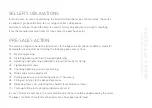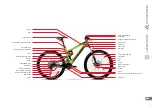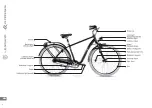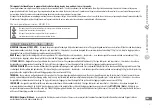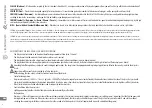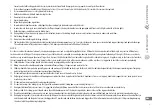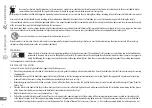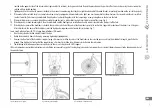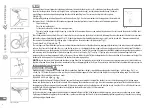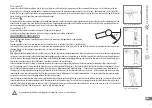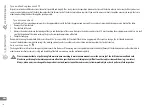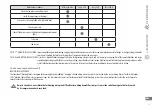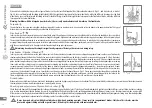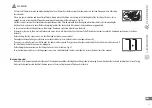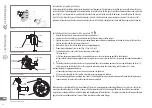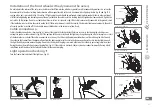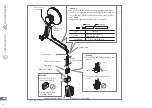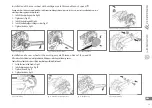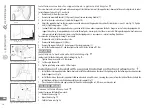
5
EN
• Correct contact of breaking pads with the rim (symmetrical action of both clamps, pads wear, proper distance of pads from the rim
• A rim without a groove should have wall thickness of at least 1,2 mm at the contact with the brake pad, if it is smaller, the rim must be replaced
2. It is recommended to wear a safety helmet while riding.
3. Hold the handlebars with both hands during the ride.
4. Do not catch cars or other vehicles.
5. Avoid sharp braking.
6. Follow the highway code regulations.
7. Two individuals should never ride a bike together (does not apply to tandem bicycles and child seats.
8. In order to make the bicycle use visible for other traffic participants, the bicycle should always be equipped with front and tail lights and with reflective lights.
9. Reflective stripes should be present in both wheels.
10. During riding in the rain one has to pay particular attention, because the braking length increases and traction is much worse under such conditions.
11. Avoid riding through mud.
12. Do not wear loose clothing while riding a bicycle.
13. The bicycle should be systematically checked in order to determine component wear (i.e. tyres, rims, brake pads, loose spaces in control and support bearings) and potential damage.
The control provides safety and prevents accidents, falls, damage and extends useful lifetime of the bicycle.
NOTE
As is the case with all mechanical elements, the bicycle undergoes wear and is subjected to significant stress. Different materials and elements of the bicycle may react in different ways
to stress and material fatigue. If a design resistance of a part of the bicycle is exceeded, it can undergo damage, potentially causing harm to the body of the cyclist. If there are any breaks,
scratches or any colour change in the areas of large stress, it means that the durability of an element has expired and it is advised to replace it. It applies mainly to: the frame, the front fork,
the seat support, brakes (levers, clips, discs, linings, cables), chain, pedals, cranks, axle of the crank mechanism and the rim, thus it is suggested to check these elements periodically.
14. Children below 12 years of age should ride a bicycle only accompanied by an adult parent or carer.
15. Riding a bicycle after alcohol consumption and under influence of drugs is dangerous and violates the law.
16. Children should be transported in specially prepared and permanently installed on the bicycle child seats, with the individual responsible for the transport providing cover for springs
potentially present in the seat in order to prevent squashing fingers.
17. It is advised to perform repairs and inspections before the season in an authorised service station.
18. Only original spare parts should be used for components critical for safety, it applies to the front fork, handlebars, frame, seat support, handlebars support, brakes, chain, pedals, crank
mechanism, rim, wheels.
19. It is advised to maintain particular care during riding down.
20. It is advised to adjust the riding style to the type of owned mountain bike (riding down, cross-country riding, etc.)
21. During installation of bicycle accessories it is suggested to follow installation manuals of these accessories or turn to the seller or an authorised service for help.
22. Before a child starts riding, parents should advise the child about proper use of the bicycle, in particular, about safe use of the leg-operated brake.
23. If aerodynamic handlebars extension is used, one has to remember that steering the bicycle and braking is much more difficult and one has to take particular care when doing so.
24. During replacing pedals, tyres, mushields or cranks (with type other than used with the given bicycle) one has to bear in mind that the minimum distance between the end of the tyre
and the mudshield and the pedal axis must be bigger than 89 mm for road and children bicycles and bigger than 100 mm for mountain and city bicycles. It helps avoiding bumping
the wheel with the pedal during taking turns.


